Hello readers! In this post, we’ll discuss the different types of ships and their applications with illustrations.
There is nothing quite like the maritime industry, which is fascinating, complex, and ever-changing. Shippers must have an in-depth knowledge of the various vessel types that travel the world’s oceans, as well as their comparative advantages and disadvantages, to stay competitive.
Choosing the right type of ship for the cargo is among the most crucial choices a shipper must make. This choice will depend on many aspects, such as the kind and volume of the cargo, the location, and the deadline.
Commercial ships come in a variety of shapes and sizes, each carrying various types of cargo across the oceans. This article will look at the various ship classifications and types. So let’s start with what is a ship.
What is a Ship?
A ship is a large vessel that travels the world’s oceans and other sufficiently deep waterways, carrying cargo or passengers or supporting specialized missions such as defense, research, and fishing.
Ships are generally determined from boats based on size, shape, load capacity, and purpose. Currently, more than 50,000+ ships are in operation worldwide, doing business around the world and carrying 90% of all the goods, commodities, and products that people need.
Today’s ships are highly sophisticated in the form of navigation-controlled bridges and big engine rooms for the machinery that powers the vessel. Cargo ships have relatively small units, while cruise ships have many units to assist the passengers.
Modern maritime commercial vessels come in different shapes and sizes and are designed to carry various cargo. Apart from this, there are other ships about which people are unaware. To understand all this, the main types of ships and their functions are briefly described in this article. Common, let’s begin.
Checkout: A Complete List of Car Body Parts [Functions] Explained
Types of Ships
Following are the main types of ships that are travel worldwide:
- Bulk carrier ships
- Container ships
- Dredgers
- Fishing vessels
- Gas carriers
- High-speed craft
- Naval ships
- Offshore ships
- Passenger ships
- Roll-on Roll-Off ships
- Livestock carriers
- Heavy life ships
- Tanker ships
- Tugs
- Canoe
- Yacht
- Hovercraft
- Submarine
- Sailboat
- Barge
- Corvette ship
- Refeer vessel
- Frigate
- Panamax ship
Read Also: Basic Car Interior Parts with [Name & Functions] PDF
#1 Bulk Carrier Ships
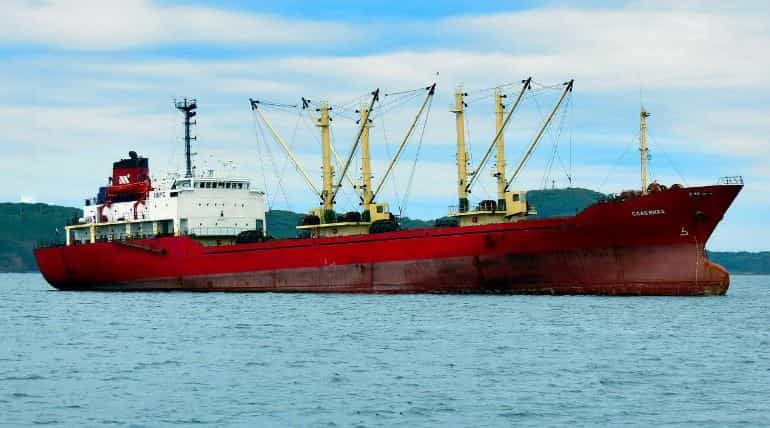
Bulk carriers are merchant ships transporting dry cargo, such as grain, coal, ore, steel coils, cement, etc., in bulk quantities. The first special bulk carriers were built in 1852. Bulk carriers are known for their maximum capacity, safety, efficiency, and durability.
Despite this, cargo loading operations can vary, and loading and unloading cargo can take several days. Bulk carriers may be gearless, rely on terminal equipment, or sometimes fitted with a crane integral to the ship. Nowadays, bulk carriers make up 21% of the world’s merchant fleet and are available in sizes from single-hold mini-bulk carriers to giant ore ships.
Advantages
- These are intended to transport large amounts of dry bulk cargo such as coal, iron ore, grains, and other commodities.
- Bulk carriers are available in various sizes and designs, allowing for flexibility in accommodating cargo types and navigating various waterways and port facilities.
Disadvantages
- Shipping in bulk can be more expensive than shipping in containers.
- Compared to goods stacked on top of one another, overweight or oversized cargo takes up more room on a freighter.
#2 Container Ships
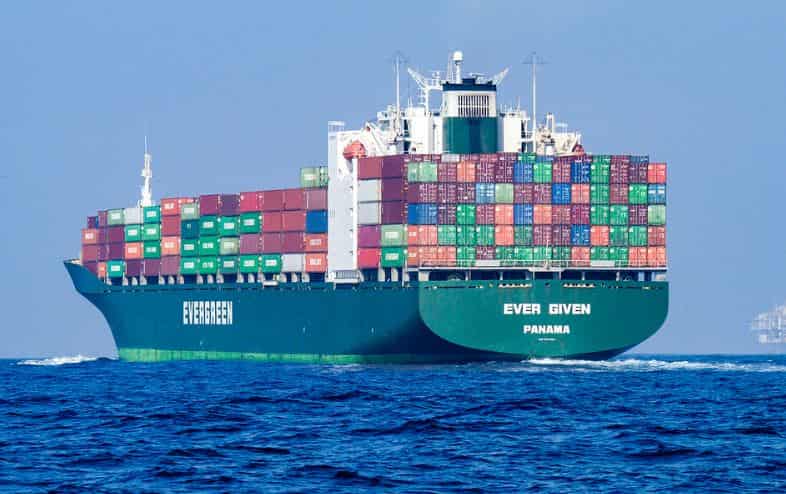
As the name suggests, these types of ships are specially designed to transport goods in containers. Container ships carry all their loads in truck-sized intermodal containers in a technique called containerization.
These are the standard means of commercial cargo transport and now carry most marine non-bulk cargo. Generally, these ships are automated and load and unload with gantry cranes. Currently, 90% of non-bulk goods worldwide are transported by container ships. The rival crude oil tanker is now the most significant commercial type of container ship.
Advantages
- They can move a wide variety of goods.
- They provide more affordable transportation.
Disadvantages
- They may not be suitable for transporting some types of oversized or unusual cargo because they are made specifically for containerized cargo.
- Managing empty containers on container ships is a common challenge.
#3 Dredgers
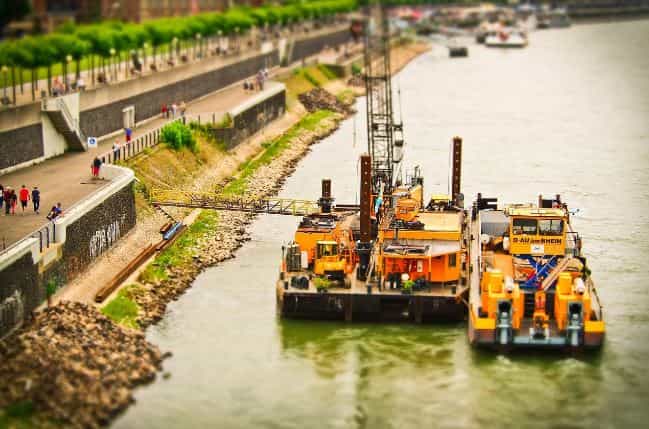
The primary function of a dredger is to remove deposited sediments such as sand, silt, or gravel from inlet streams, waterways, or the ocean floor. Simply put, these are ships containing excavation equipment that are used to remove sand and other types of deposits from the ocean floor.
These ships are used for many purposes, such as navigating shallow coastal areas, deep-sea mining, etc. Common types of dredgers include simple jet-lift and air-lift, auger suction, pneumatic and amphibious dredgers.
Advantages
- Dredgers are essential for maintaining and constructing waterways, including ports, channels, and harbors.
- These are employed in projects aimed at reclaiming land from the seabed.
Disadvantages
- Dredging operations can disturb or displace marine organisms, altering their behavior, migration patterns, and breeding cycles.
- In water bodies, dredging can change the equilibrium between erosion and sedimentation.
# 4 Finishing Vessels
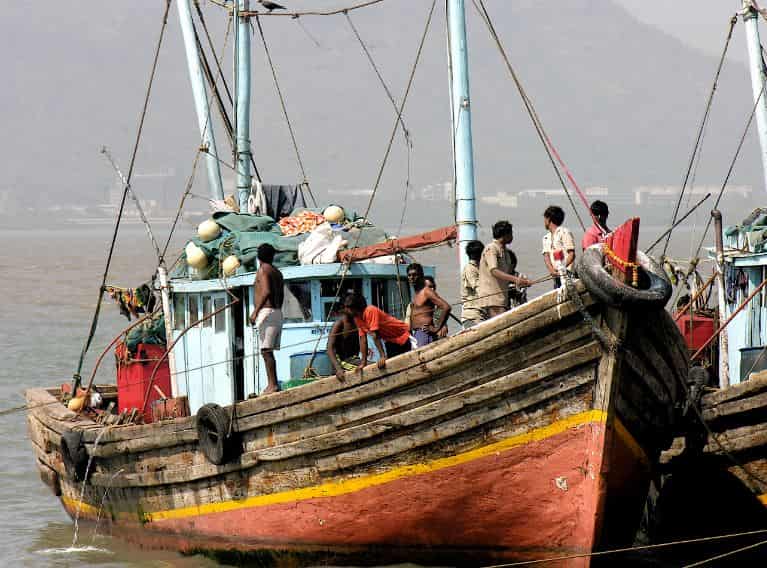
As the name implies, a fishing vessel is used for fishing at sea or on a lake or river. A fishing vessel uses a conical net that traps fish by dragging it through or down the water. There are many different types that are used in commercial, artistic, and recreational fishing.
The total number of fishing vessels worldwide in 2016 was approximately 4.6 million. It is difficult to estimate as they range in size from small dinghies to large charter cruisers and, unlike commercial fishing vessels, are often not dedicated solely to fishing. Fishing vessels are mainly classified into two types which are trawlers and non-traveling vessels.
Advantages
- These vessels can reach areas with large fish populations, allowing for efficient harvesting of marine resources.
- Due to their contribution to the global seafood supply, fishing vessels are crucial in ensuring food security.
Disadvantages
- It is common for fishing vessels to catch endangered or protected species unintentionally, known as bycatch.
- Typically, fossil fuels are used to power fishing vessels, which results in fuel consumption and the emission of greenhouse gases and air pollutants.
#5 Gas Carriers
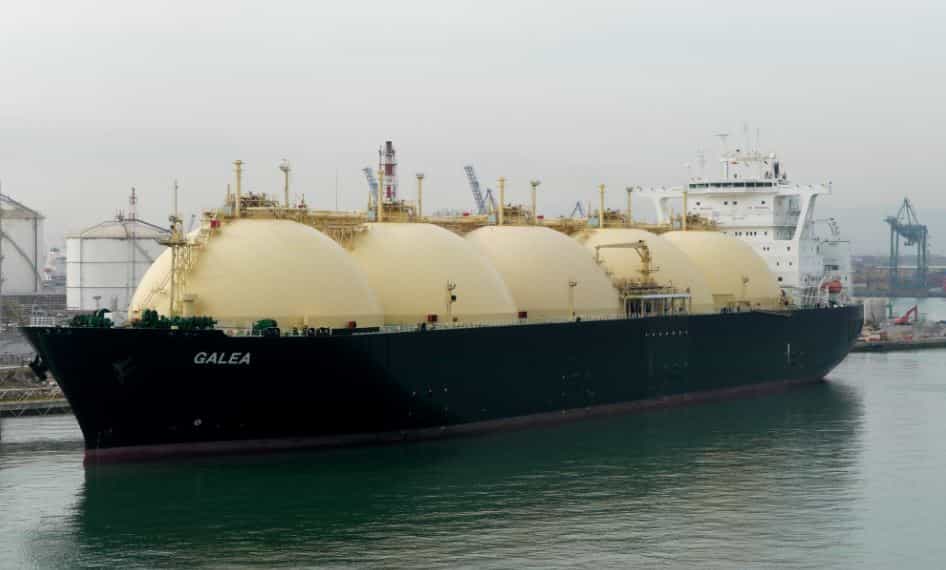
A gas carrier, also known as an LPG, or LNG carrier, is a vessel designed to transport LPG, LNG, CNG, or liquefied chemical gases in bulk. They are built to move liquefied gases at low-temperature pressure between terminals equipped with fully refrigerated storage tanks. Their great feature is the presence of round tanks above the main deck.
LNG gas carriers differ markedly in that they have large circular tanks on their deck. They are available in 4 different types of tanks: independent tank, membrane tank, integral tank, and semi-membrane tank. On the other hand, chemical cargo ships have multiple tanks to protect them from mixing the different substances they carry.
Advantages
- Liquid gases can be efficiently transported over long distances thanks to gas carriers.
- LNG has lower carbon emissions than conventional fossil fuels like coal or oil, so gas carriers support the transportation of these cleaner energy sources.
Disadvantages
- Gas carriers move highly flammable and potentially dangerous gases like liquefied natural gas (LNG) and liquefied petroleum gas (LPG).
- For loading and unloading operations, gas carriers require specialized infrastructure and facilities.
Read Also: What are the Types of Transmission System Used In Vehicles?
#6 High-Speed Craft
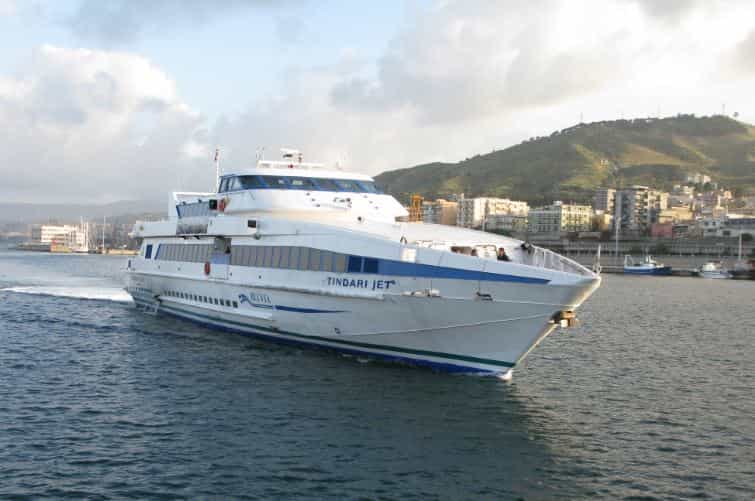
High-speed craft uses air pressure to move at high speed over water and has engines and turbine propellers to move them. These ships were trendy when they were launched and still maintain their popularity.
These types of ships are advanced, high-performance (usually high-speed) marine vessels designed for civilian use, also known as fast yachts. Most of these technologies are not used in commercial ships. Mainly high-speed crafts serve as passenger ferries.
Advantages
- The efficiency of transporting people and goods can be increased by using high-speed craft, which can reach speeds that are significantly faster than those of conventional vessels.
- Even at high speeds, high-speed craft are built to provide a smooth and comfortable ride.
Disadvantages
- Compared to conventional vessels, high-speed craft are typically more expensive to construct, maintain, and operate.
- Compared to slower ships, the high-speed craft uses more fuel per unit of distance travel.
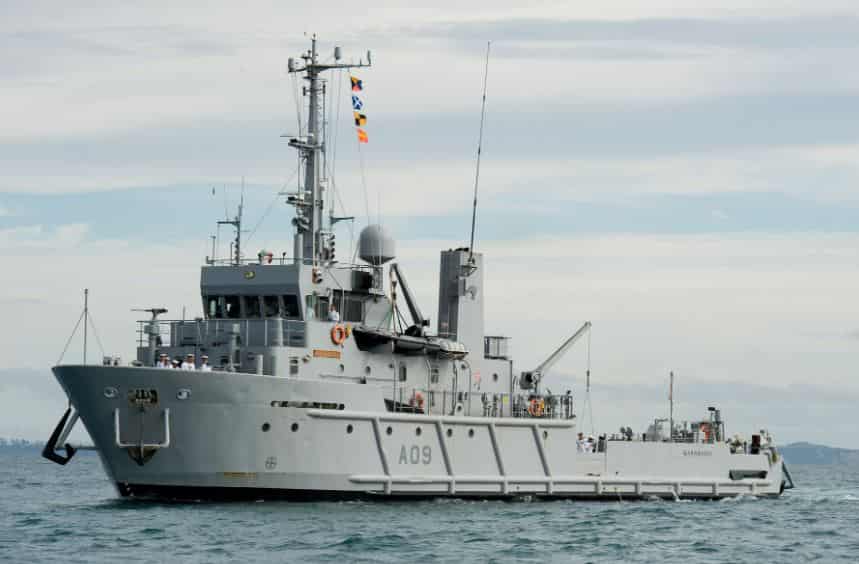
It is a military ship used by the Navy. Naval ships are large, heavily armed surface ships primarily designed to engage enemy forces on the high seas, including battleships, destroyers, and corvettes.
These are differentiated from civilian ships by construction and purpose. These ships are damage resistant and equipped with weapon systems, although the armament on military transport is light or non-existent. They were designed primarily for naval warfare and are called warships.
Advantages
- Naval vessels protect a country’s maritime assets by offering security and protection from potential dangers.
- Naval ships are frequently used for humanitarian assistance and disaster relief.
Disadvantages
- Naval ships, which tend to be extremely advanced warships, can be costly to construct, run, and maintain.
- These are exposed to modern weapons systems, such as submarines, torpedoes, and anti-ship missiles.
#8 Offshore Ships
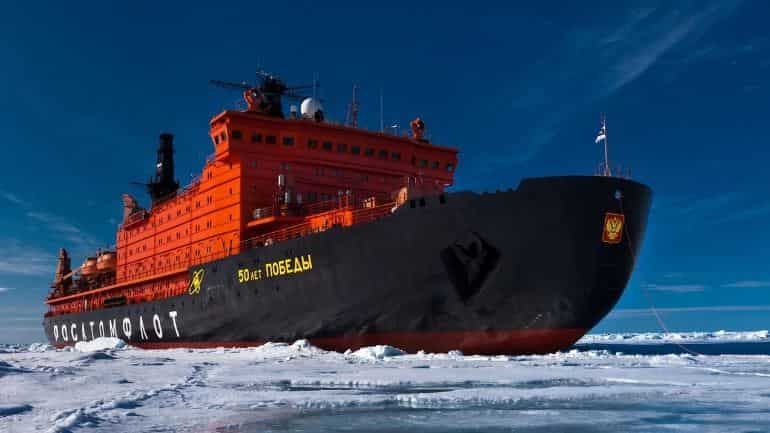
Offshore ships are mainly used for oil exploration and construction at sea. There are many types of offshore vessels. In addition, these ships provide transit and respite to crew personnel to and from the operational areas of the high seas when required.
As noted above, the term offshore vessels is a collective context and include a wide range of vessels employed in the region of the high seas. These ships are usually 50 to 100 meters (160 to 330 ft) in length and perform various tasks such as logistic support and transportation of goods, equipment, and equipment.
Advantages
- To support offshore operations in the oil and gas sector, offshore ships like supply ships and platform support ships are essential.
- These have equipment and safety features to protect the well-being of the staff and deal with emergencies.
Disadvantages
- For safe and effective operations, offshore ships rely heavily on weather conditions.
- These ships are complex vessels with modern technology and equipment. Their operation and maintenance necessitate skilled personnel and specialized training.
#9 Passenger Ships
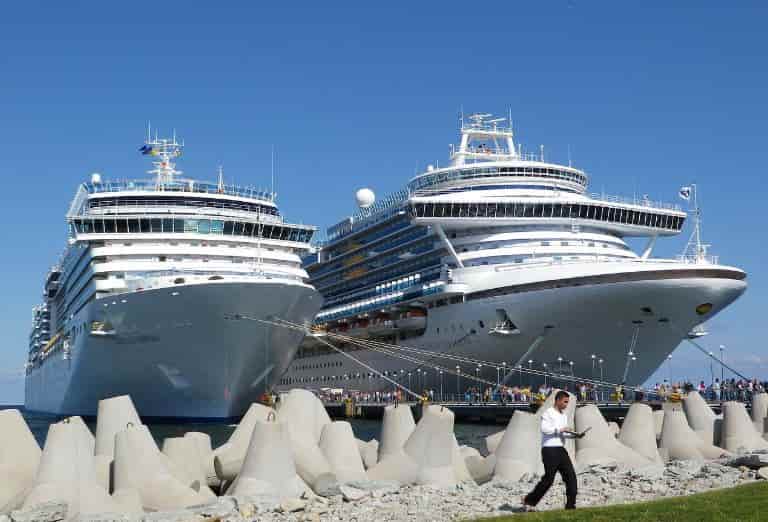
Passenger ships are also known as cruise ships, primarily for transferring passengers from one place to another. Unlike the seaplanes used for transportation, cruise ships are usually used for round-trip voyages to various ports, where passengers can go on tours.
Modern types of passenger ships have less hull strength, speed, and agility than seagoing ships. Although they have added facilities to cater to water tourists, recent ships have been described as “floating condominiums laden with balconies.” Generally, cruise ships do two to three nights or more round trips without visiting any port.
Advantages
- Passenger ships offer a unique and enjoyable travel experience, allowing passengers to visit different locations and participate in leisure activities.
- They make a significant economic contribution to the cruise industry by promoting local business growth, creating jobs, and bringing in tourism revenue.
Disadvantages
- Ships that carry passengers, especially large cruise ships, can have a substantial environmental impact.
- Passenger ships may become overcrowded, especially during busy travel times, resulting in clogged common areas, lengthy lines, and insufficient personal space.
#10 Roll-on Roll-Off Ships
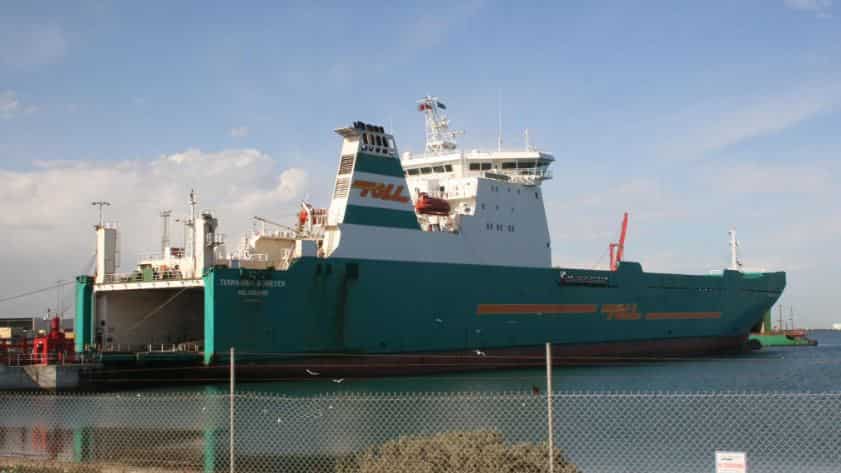
Roll-on roll-off ships are types of ships that are used to carry wheeled cargo. Wheeled cargo is nothing other than cars, motorcycles, trucks, buses, and railroad cars are driven on and off a ship, either on their wheels or using a platform vehicle, such as Self-propelled modular transporter.
Roll-on roll-off ships contrast with lift-on/lift-off (LOLO) ships, which use cranes to load and unload cargo. RORO ships have built-in or shore-based ramps or ferry slips that allow cargo to be rolled on and off the vessel efficiently. The word RORO is generally used for large ocean-going vessels.
Advantages
- Ro-Ro ships provide effective cargo handling capabilities, enabling the direct driving of vehicles, machinery, and other wheeled cargo onto and off the vessel.
- Cars, trucks, trailers, construction equipment, and even perishable goods can all be transported on ro-ro ships.
Disadvantages
- Although Ro-Ro ships can transport various wheeled cargo, they might not be able to transport all non-wheeled cargo.
- Ro-Ro ships need specialized port facilities with proper ramp systems and enough room for vehicle loading and unloading.
Read Also: What is the function of the flywheel in automobile engines?
#11 Livestock Carriers
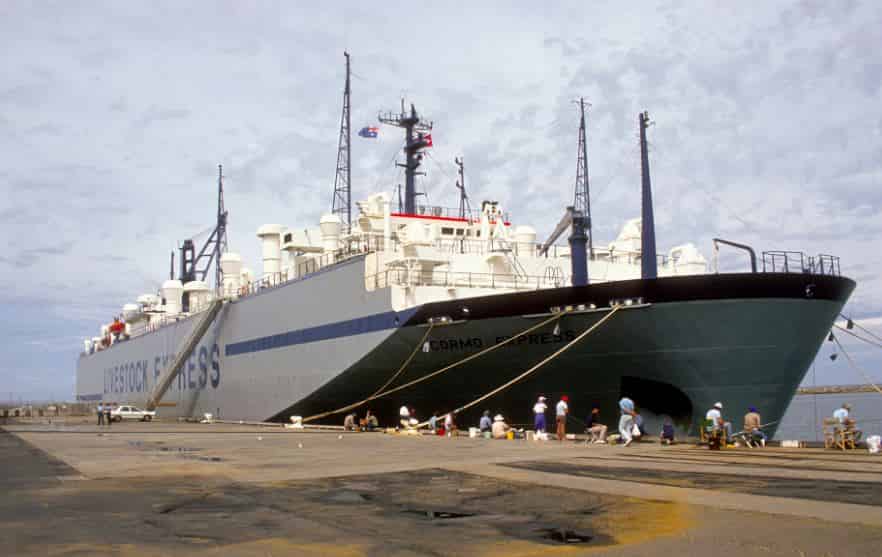
A livestock carrier is a large vessel used for the live animal export of sheep, cattle, and goats. These types of ships are typically newly built or converted from container ships. When transporting livestock, adequate ventilation, food, and water are primary considerations.
Livestock carriers must carry enough food for the animals during the journey and enough stock for emergencies. Common livestock carriers have a capacity of about 30,000 to 40,000 sheep (or 3000 to 4000 head of cattle). Livestock carriers typically travel the Middle East between Australia and New Zealand.
Advantages
- Livestock carriers are specifically designed to transport live animals safely and decently.
- Livestock carriers support the export and import of livestock between nations by facilitating the trade of live animals internationally.
Disadvantages
- The risk of disease transmission and outbreaks can rise when animals are kept in close quarters in livestock carriers.
- It can be difficult for livestock carriers to comply with local, state, and federal laws about environmental standards, biosecurity, and animal welfare.
#12 Heavy Lift Ships
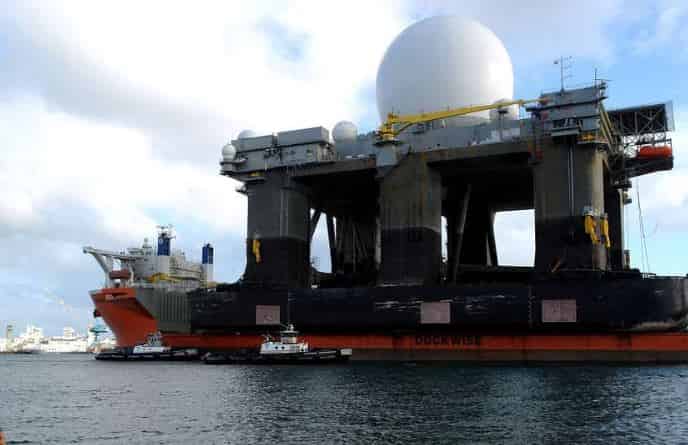
As the name suggests, a heavy-duty ship is designed to carry heavy industrial components that regular ships cannot handle. They are huge ships capable of carrying other ships, large industrial units, floating plants, etc.
For example, these ships transport offshore platforms from construction to drilling sites. Some are equipped with high-capacity cranes for loading at ports without bulky capacity. And some allow the cargo to float in position before the ship lifts the cargo out of the water.
Advantages
- Large and heavy loads that cannot be carried by standard cargo ships can only be transported by heavy lift ships.
- Heavy lift ships transport heavy cargo to remote or inaccessible locations worldwide.
Disadvantages
- Because of their specialised design and equipment, heavy lift ships have a limited cargo capacity.
- To load and unload heavy cargo, heavy lift ships need the appropriate port facilities and machinery.
#13 Tanker Ships
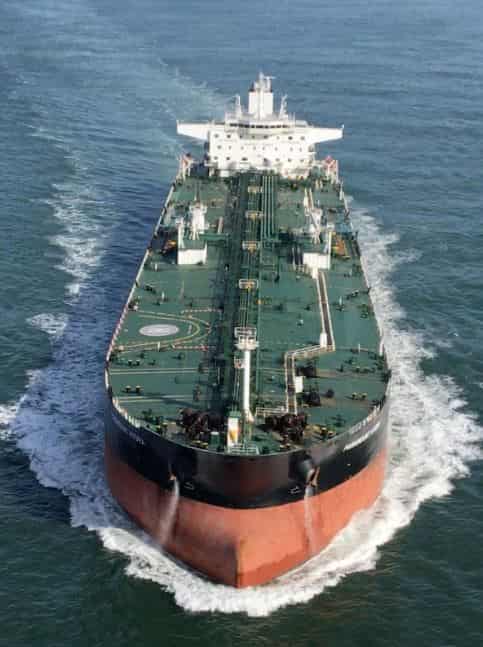
Tanker ships are designed to transport large amounts of stored liquids or gases. Tanker ships are further classified into different types based on their cargo. The main types include oil tankers, chemical tankers, and gas carriers.
Apart from their applications, these ships also carry commodities such as vegetable oil, molasses, and alcohol. In the United States Navy, a tanker used to refuel other ships is called an oiler. Tankers can range in size from several hundred tons in capacity for long-distance transportation.
Advantages
- Tanker ships are made for the safe transportation of liquid cargo, including liquefied natural gas (LNG), chemicals, crude oil, and petroleum products.
- Because tanker ships can transport large amounts of cargo, they can benefit from economies of scale.
Disadvantages
- Safety is the top priority because tanker ships transport hazardous and flammable materials.
- Tanker ships are extremely dependent on fluctuations in the oil industry.
#14 Tugs
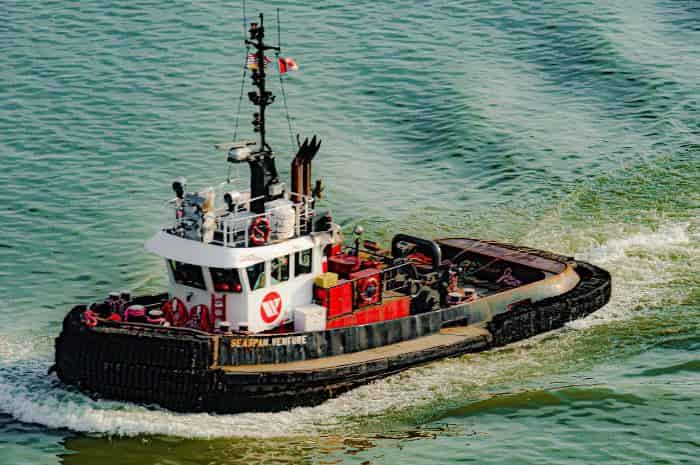
A tug is a marine vessel that operates other ships by pushing or pulling along a direct contact or tow line. These boats usually haul vessels that cannot sail well independently, such as in crowded harbors or narrow canals.
Modern tugs are highly maneuverable, with pulling power that can exceed 100 tons. Early tug models had steam engines, while modern ones had diesel engines. Some tugs are sea-going, and some are icebreakers or rescue tugs. Many tugs carry deluge guns, aiding firefighting, especially in harbors.
Advantages
- Tugboats are designed and outfitted with powerful engines and towing equipment to help tow and move larger vessels such as ships, barges, or floating structures.
- Tugboats give ships more propulsion and control, improving maritime operations safety.
Disadvantages
- Tugboats typically travel at slower speeds than other types of vessels, which limits their usefulness for lengthy journeys or operations that must be completed quickly.
- Tugboats depend on outside variables like weather, water depth, and tidal patterns.
#15 Canoe

A canoe is a light vessel, usually pointed at both ends and opened from above. These are typically driven by one or more seated or kneeling paddlers facing the direction of travel and using single-blade paddles.
Currently, canoes are widely used for competition and pleasure, such as racing, whitewater, touring and camping, freestyle, and general entertainment. Most modern canoes are molded plastics or composites such as fiberglass or Kevlar or incorporate graphite. The intended use of canoes is determined by their size, length, and construction material.
Advantages
- Canoes are highly maneuverable watercraft that allows easy navigation in various water bodies, including rivers, lakes, and calm coastal areas.
- On the water, canoes offer a quiet and environmentally friendly mode of transportation.
Disadvantages
- Compared to larger watercraft, canoes have a smaller carrying capacity.
- Canoes are less stable than other types of watercraft, particularly in rough conditions or when loaded unevenly.
Read Also: What are IC Engines? How does it work?
#16 Yacht

A yacht is a sailing or power vessel used for pleasure, cruising, or racing. These types of ships have a cabin with facilities that are suitable for overnight use. The vessel is expected to be at least 33 feet (10 m) in length and may be judged to have good aesthetic qualities.
These are powered by electrical power provided by a motor-driven alternator or a battery recharged by the motor. There are mainly two types of yachts available; Racing yachts are designed to emphasize performance over comfort, and charter boats are run as a for-profit business.
Advantages
- For individuals or groups, yachts offer a private and exclusive environment.
- Yachts can be modified and customized to fit particular preferences and requirements.
Disadvantages
- The smooth sailing, guest services, and onboard maintenance often require a crew when operating a yacht.
- A yacht comes with several upfront costs, including the purchase price, maintenance, crew salaries, insurance, fuel, and docking fees.
#17 Hovercraft
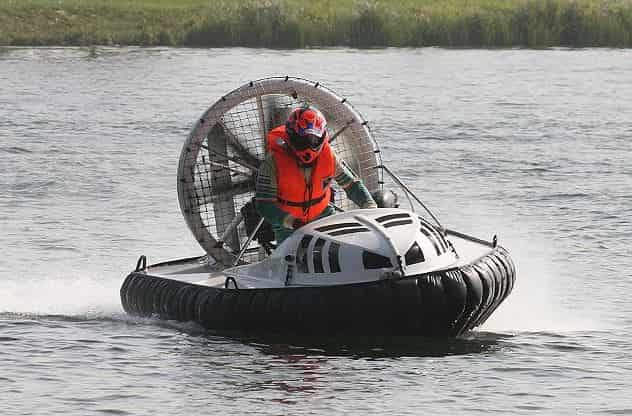
A hovercraft is a floating craft capable of traveling over land, water, mud, ice, and other surfaces. A hovercraft has a skirt to contain air. When the air blower is turned on, this skirt creates a pocket that traps pressurized air. That pressurized air gives a hovercraft lift to move forward.
Nowadays, they are used worldwide for disaster relief, Coast Guard, military, survey applications, and specialized transport for sport or passenger service. As the hovercraft rises above the surface, there is no friction between the skirt and the ground, so it can travel smoothly on the land.
Advantages
- Hovercraft can travel across various surfaces, including ice, mud, marshes, and water.
- Hovercraft can travel at high speeds, often faster than traditional boats or vehicles.
Disadvantages
- Because of the operation of their engines and fans, hovercraft make a lot of noise.
- Compared to other forms of transportation, hovercraft typically have a lower capacity for passengers and cargo.
#18 Submarine
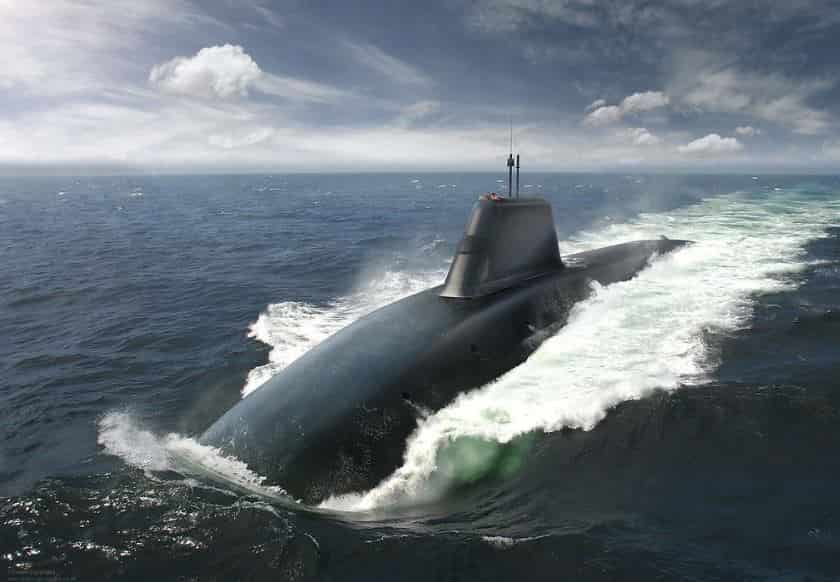
A submarine, also known as a sub, is a vessel capable of independent operation underwater. This differs from a submersible, which has limited capability underwater. Submarines usually have large ballast tanks filled with air that help them float on the ocean’s surface.
At the top of the ballast tank are valves that are opened when the submarine is timed to submerge. Most large submarines have a cylindrical body with conical ends, usually located in the middle, which houses communication and sensing equipment and periscopes. Submarines include a wide range of types and capabilities.
Advantages
- With their ability to operate underwater while submerged, submarines can be hidden and operate stealthily.
- In naval combat, submarines provide an offensive and strategic advantage.
Disadvantages
- They are less useful in situations that call for fast pursuits or agile movements because they are slower and less flexible than surface vessels.
- Due to their complexity and advanced technology, submarines have high construction and maintenance costs.
#19 Sailboat
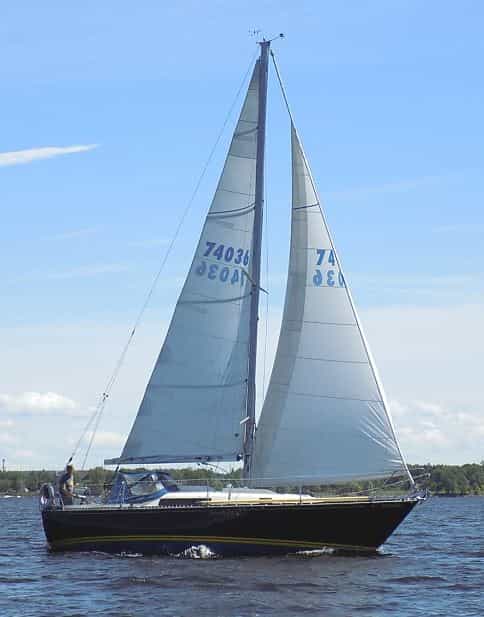
A sailboat is a boat partly or wholly propelled by sails and smaller than a sailing ship. The forces of the wind on the sail and the water on the underwater parts of the boat combine to propel the boat through the water.
When the wind blows across the sails, the aerodynamic lift is created, much like the wing of an airplane. Some sailboats have motor propellers, which help propel the sailboat even with no wind.
Advantages
- Sailboats are energy and environmentally friendly due to their reliance on wind energy for propulsion.
- On the water, sailing offers a calm and peaceful experience.
Disadvantages
- Sailboat propulsion heavily depends on wind conditions. Their speed and maneuverability may be restricted by calm or unstable winds.
- When there is bad weather, like a storm or strong winds, sailboats may have trouble.
#20 Barge
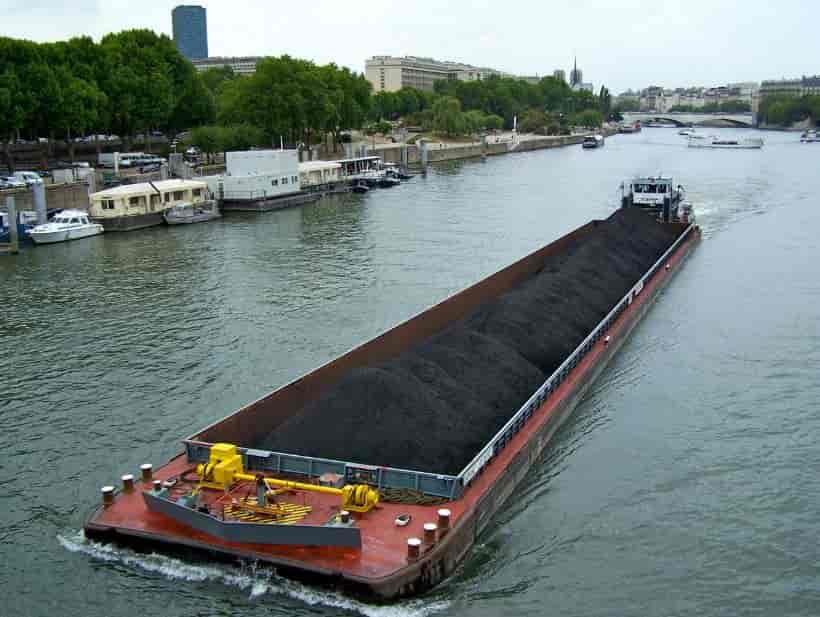
A barge is a flat-bottomed boat that runs on a river and can transport bulk cargo. The barge can be self-propelled, usually with a slow-rotating diesel engine and a large-diameter fixed-pitch propeller.
Draft horses initially pulled the barges on an adjacent towpath. Some other types of barges must be pulled by tugs or pushed by pusher boats. Compared to towed barges, the pusher system has improved handling and is more efficient, as the pushing tug becomes part of the unit, contributing to the movement of the whole.
Advantages
- Barges are able to move a lot of cargo on a single trip thanks to their large cargo carrying capacity.
- Since they can travel through inland waterways like rivers, canals, and lakes, they can access places that other modes of transportation might not be able to.
Disadvantages
- Compared to other forms of transportation like trucks or trains, barges typically travel at a slower speed.
- Docks, ports, and waterways with navigable channels are necessary for barges to operate efficiently.
#21 Corvette Ship
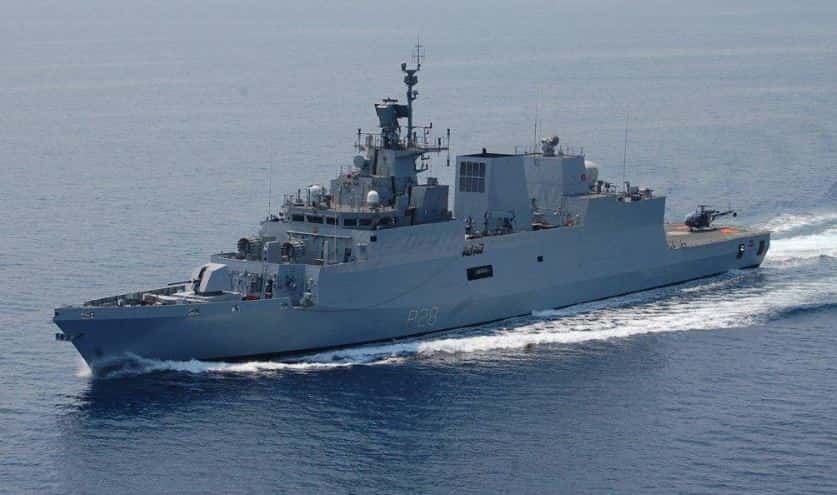
A corvette is a type of small warship. It is generally the smallest class of ships regarded as official warships. In the modern era, a corvette can be used as a fast attack craft, missile boat, and coastal patrol craft.
Typically, these corvettes weigh between 500 and 2,000 tonnes. Recent corvette designs may weigh up to 3,000 tonnes and have a hangar to house a helicopter, making them similar in size and functionality to smaller frigates.
#22 Reefer Vessels
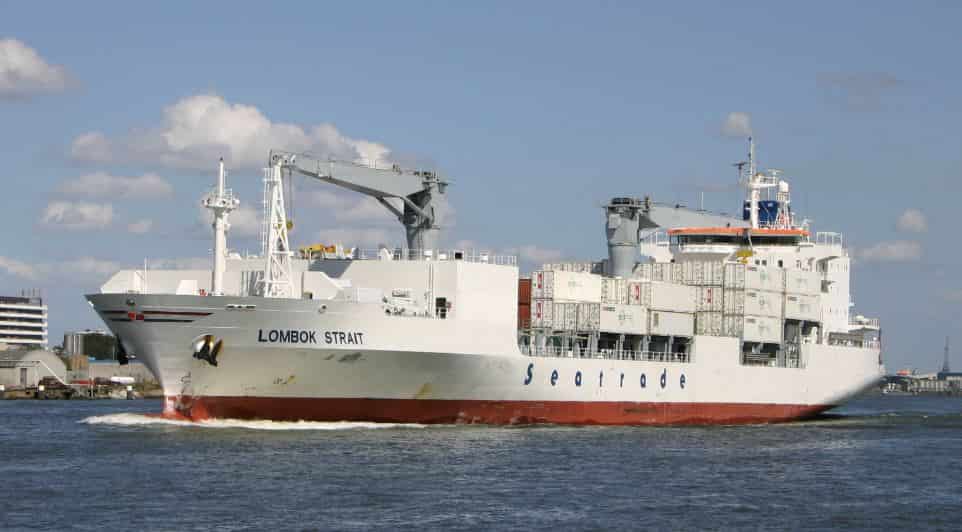
A reefer ship is a refrigerated cargo ship designed for transporting perishable cargo, such as fruits, meat, vegetables, dairy products, and similar items that require temperature control.
Simply put, a reefer ship can carry the equivalent of 40 to 250 trucks, depending on its size. Due to the extensive trade between the hemispheres, reefer ships operate seasonally but can operate all year long.
#23 Frigate
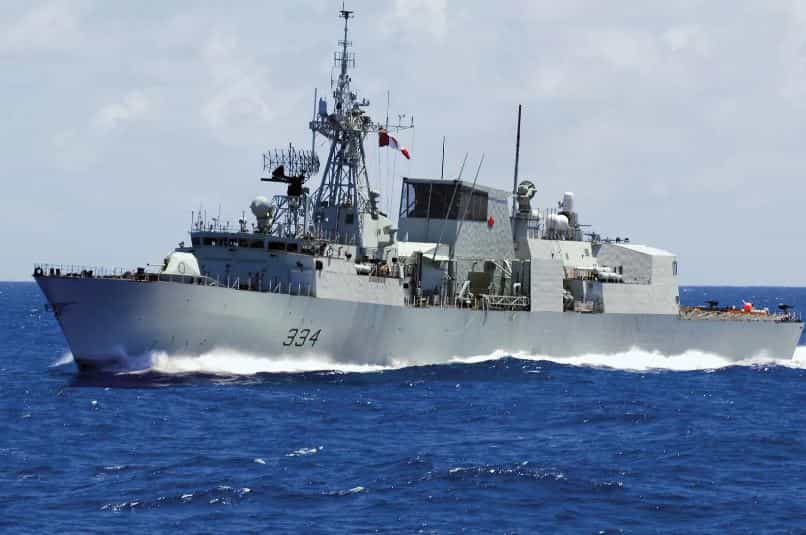
A frigate is a kind of naval warship that is bigger and more heavily armed than a corvette while also being smaller and faster than a destroyer. Frigates can hold a crew of several hundred sailors and are typically between 110 and 150 meters long.
In order to engage enemy targets, these ships frequently have a combination of surface-to-air missiles, anti-ship missiles, torpedoes, and naval guns. In naval operations, frigates are essential for convoy protection, maritime surveillance, maritime interdiction, and supporting larger fleet operations.
#24 Panamax Ship
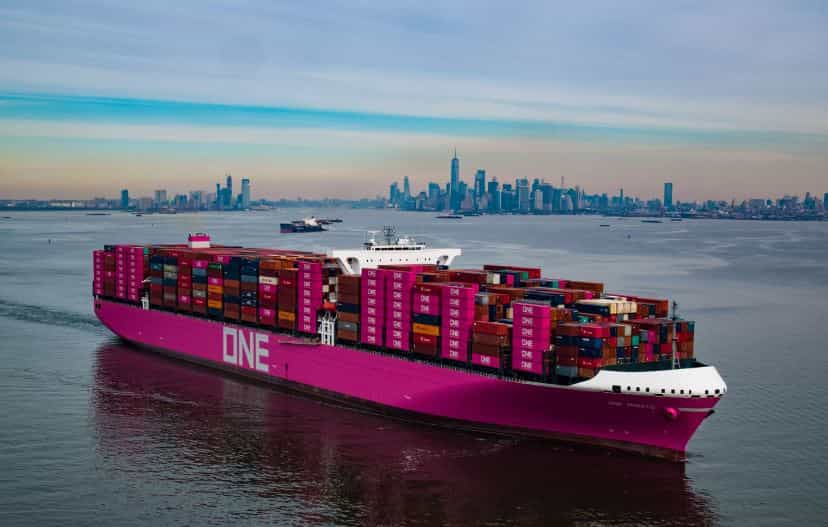
A ship that meets the maximum construction requirements to pass through the Panama Canal is referred to as a panamax ship. The word “Panamax” is a combination of the words “Panama” and “maximum.”
These vessels are made to fit through the locks and narrow channels of the Panama Canal, a vital international shipping route that connects the Atlantic and Pacific Oceans.
Normally, Panamax ships can carry between 65,000 and 80,000 deadweight tonnes (DWT) of cargo. Some Panamax ships can transport many shipping containers and are also equipped to handle containerized cargo.
Wrapping It Up
So now, I expect I’ve covered everything about “types of ships. “ If you still have questions about this topic, please contact us or ask in the comments. If you like this article, then please share it with your friends.
Want free PDFs direct to your inbox? Then subscribe to our newsletter.
Download PDF of this article:
You might like to read more articles about machines on our blog:
- What are the different types of Milling machines?
- How does a Lathe Machine work? Their Types, Advantages & Disadvantages
- What is a Drilling machine? Its Types, Operations, and More
- Petrol Engine vs Diesel Engine: What’s The Difference?
- Different Types of Clutches Used in Automobiles
- 20 Basic Car Interior Parts Explained [Name & Functions]
- Types of Doors Used in Automobile Vehicles
- Understand The Different Types of Chassis & Frames
- 12 Types of Car Headlights [When & How to Use?]
- What Are The Types of Gearbox? Their APplications
External Links:
The above-used images are created under common licenses.
It was very clear and good to understand.
Please share Article about India’s Ports and its commodities.
Thank you! I’ll share definitely in future.